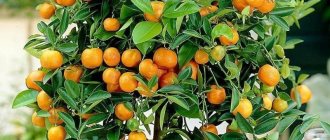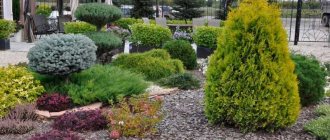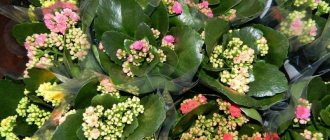From time immemorial, indoor trees and flowering plants have created a cozy atmosphere at home, bringing happiness and love, peace and tranquility to their owners.
But home gardening is becoming especially relevant right now, in the intense pace of life in large cities. After the abundance of concrete, glass and metal, people have an urgent need to create a small green oasis at home to communicate with wildlife.
Indoor trees of various types (coffee, lemon, dollar, money), as well as small flowering potted crops for growing on window sills and shelves (Saintpaulia, spathiphyllum, low-growing varieties of Chinese rose) are ideal for this.
Beautiful indoor plants will make the terrace more cozy
Indoor trees and flowers can not only feel, but also create a mood for their owners. Living plants in the house relieve stress and fatigue, give love and happiness, ennoble the interior, help purify the air from pathogens and create a special indoor microclimate. Not a single, even the most expensive composition of artificial and cut flowers can replace fresh flowers growing in pots in the house.
All plants in the house are classified according to three large groups:
- Decorative deciduous. These include indoor trees and various plants whose aesthetic value lies in their beautiful leaves. The leaves can be light and dark green, variegated marbled in color, and also have such bright colors that they are quite capable of replacing flowers. Plants with original leaf shapes are widely used in the interior - linear, lobed, with a dissected or jagged edge.
- Decorative flowering. These include both perennial plants that bloom all year round, as well as annual and tuberous potted plants with a seasonal flowering period. Perennial flowering crops, unlike annual ones, remain decorative for a long period and do not die after flowering. Tuberous flowering plants have the peculiarity of falling asleep in winter after the flowers and leaves fall off. Annual plants are widely used in the interior to create short-lived but beautiful compositions of fresh flowers.
- Cacti and succulents. These include representatives of various families, similar in biological and external characteristics. The plants are stable and unpretentious when kept indoors, compact and have an incredible variety of shapes. Due to its unique properties, as well as exclusively decorative flowering, this group of plants has become widespread in indoor culture.
Many ornamental plants are also fruit plants, delighting their owners with tasty and healthy fruits (lemon and tangerine trees).
What crops are most common in indoor floriculture and why are they remarkable? A mini-rating of the most famous houseplants includes:
Beautiful indoor plants in the interior of an apartment
A tall fern will perfectly decorate the interior
Blooming bonsai
Decorate your home with different plants
A coffee tree
An indoor coffee tree will be a wonderful interior decoration thanks to its large evergreen leaves and decorative snow-white flowers with a sweet aroma.
The exotic coffee tree refers to fruit trees, the berries of which, after ripening, picking and roasting, acquire the familiar appearance of coffee beans.
There are only two types of coffee trees suitable for growing at home - Liberian and Arabian. An adult coffee plant can produce up to 0.5 kg of fruit per year.
Coffee trees in glass pots Large coffee tree with fruits Tall coffee tree
Caring for a coffee tree at home
Humidity and watering of the coffee tree
Caring for a coffee plant is simple and pleasant. It loves bright, diffused lighting. The bright, southern side is the best place for him in the apartment. Drafts and radiators are the main enemies of the coffee tree. Comfortable temperature is normal room temperature. In summer it likes more water, in winter less watering is needed. You need to constantly monitor the soil moisture in the pot, otherwise the leaves of the coffee tree dry out and fall off. Moisture in the soil is well maintained if the pot with the coffee tree is placed in a tray filled with water for several hours.
Lemon Tree
The lemon tree is a very decorative fruit plant. Natural types of lemon are unsuitable for home cultivation in pots, since under natural conditions they reach quite large sizes.
Therefore, breeders have developed dwarf varieties of lemon trees - these are Pavlovsky lemon, Maykop lemon, Genoa, etc. The evergreen lemon tree does not require special care, and with proper maintenance it is capable of bearing fruit all year round.
You can grow a lemon tree at home simply from seeds. And creating a home lemon garden from several lemon trees will not only refresh the interior, but also completely provide the average family with delicious lemons.
Fruiting lemon tree
tangerine tree
The tangerine tree, like the lemon tree, is an evergreen citrus fruit tree.
And, although in natural conditions tangerine trees do not grow so large and overall, for growing at home it is better to choose dwarf crops - Clementine, Unshiu, tangerine trees of the Vasya group, etc.
Mandarin is unpretentious and easy to keep at home. Similar to a lemon tree, a tangerine can be easily grown from an ordinary seed. Dark green shiny leaves, small beautiful flowers with a delicate aroma and bright orange fruits look very beautiful in the interior.
Fruit bearing tangerine tree
Small tangerine tree on the windowsill Small tangerine trees in pots
Useful tips
If you like to do hair, buy an indoor tree whose crown can be shaped, and braid and trim it to your heart's content. Plants such as aucuba, laurel, and ficus will suit you.
If you decide that the planter with the tree will stand on the floor, immediately install a cart under the planter or screw wheels to its bottom so that the plant can be moved around the room.
You can plant small plants in a pot with an indoor tree. It's both beautiful and good for your tree.
And, most importantly, remember: indoor trees, like any plant, sense the mood of their owner. Grow your plants carefully, with love, and they will definitely reciprocate your feelings, making your home beautiful and cozy.
Now let's talk about the types of indoor trees.
banana tree
The banana plant can be grown at home both as a fruit plant and as an ornamental plant.
Even in indoor conditions, this large herbaceous plant, very similar to a tree, reaches a height of 2 meters.
Popular varieties are the decorative velvety banana with inedible fruits and the Kiev dwarf fruit banana with large and sweet fruits.
Indoor banana tree Tall indoor banana tree
Banana tree in a pot
Rating of popular indoor trees
Growing trees indoors is not as problematic as it might seem at first glance. And although the principles of caring for each type have their own, each of them needs basic attention. For you there is a catalog of indoor trees, which contains a list with photographs and recommendations for caring for them.
- Only residents of large houses can afford a palm tree. This is due to the fact that it requires extensive space for rapid, intensive growth. It is better to install the tub in a place where there are no green neighbors, since palm trees are very unfriendly to them.
- Bocarnea (nolina) or bottle tree in its homeland can reach enormous sizes, and the interesting name bocarnea was popularly received due to the interesting appearance of the trunk, thickened towards the lower part. As nature intended, this tree can survive for a long time without watering, so it does not require any special care.
- The banana is attractive because it decorates any room with its decorative appearance and can bear sweet fruits. Growing a banana at home is quite simple, the only important thing is that the soil requires constant feeding due to the rapid and active growth of the trunk.
- Citrus types of indoor trees are represented by the following options: lime, lemon, tangerine, orange. It is these options that are in great demand, as they can adapt to different environmental conditions. Lemon and lime can forgive you any mistakes in care, and tangerine will dry out only if the owner is careless. Citrus will delight not only with its appearance, but also with its subtle aroma in the apartment.
- The coffee tree will not tolerate any green surroundings; you will have to remove all other pots from this room. Coffee itself does not require much effort to grow, but you can’t hope for fruit. They can be achieved only in 1 case out of 1000 and only if the temperature and humidity levels are observed.
- Hibiscus is popularly called Chinese rose. Even from a tiny sprout you can grow a large flower, and with proper care, growth occurs at an accelerated pace. The flower tree is a frequent visitor to offices, as it has a high level of adaptation to different environmental conditions.
- Tea tree - takes root well in the home with proper care. Greens love a moist environment and hate direct sunlight. Water it abundantly and often, but do not fill it to the point of puddles. If the flower likes it, then in a couple of years you will have your own tea.
- Monstera is a fairly large-sized type of greenery that does not require complex care. Its height can reach up to 5 meters, and the monstera itself is one of the most unpretentious representatives of the flora. The growth is very interesting, because as the foliage matures, holes appear, which later turn into peculiar slits. Monstera does not like temperature changes, so it can only be bred at home, but it is dangerous to do this in the office, since the minimum temperature is +17 degrees. If you plan to install a flowerpot on a windowsill, then it is better to choose the sunny side, but avoid direct sunlight.
Remember! Monstera grows very quickly and goes up. Water until the soil has time to dry out a little.
- Ficus benjamina grows to enormous sizes - 20 meters in countries with a humid climate. As indoor plants, ficus trees will barely reach 3 meters, but choose the right place with a reserve so as not to move the tub later. Moreover, it is not even recommended to twist the pot, otherwise the leaves may fall off. Avoid cold, dark and drafty rooms. To prevent a living tree from drying out, it is periodically sprayed. Moderate watering is necessary: without dryness, but also without flooding.
- Laurel. Caring for this species at home requires compliance with certain conditions. Laurel, 1.5-2 meters high, loves light, so place the pots on the south side. Laurel foliage has a fairly dense structure, and therefore even bright sun cannot harm the greenery. In the shade it will immediately lose its attractiveness. Spraying and systematic (once a month) shower are indicated for the foliage. Watering is necessary frequently and abundantly, making sure that the soil does not dry out.
Related article: Marigold: planting and care in open ground, photos, types and varieties
- Dieffenbachia is a frequent visitor to offices up to 2 meters high. The choice is justified by its beauty and ability to absorb harmful substances in the air. Dieffenbachia sap is poisonous, so be careful if children or pets live in the house. The indoor flower-tree Dieffenbachia requires a lot of light all year round, but in the summer heat the foliage should be shaded. In spring and summer, water 3 times a week, and in winter and autumn - once a week.
- Abutilon represents flowering indoor trees, the second name of which is indoor maple, the third is rope. Height is up to 1.5 meters, it is unpretentious in care, and blooms from spring to autumn, and at temperatures above +15 in winter. You can place it either in an apartment or on a balcony or loggia. Requires moderate watering and sprinkling.
- Many gardeners consider Khoveya to be the most successful example for home maintenance. The height is no more than 2 meters. The location side is unimportant, and if you forget about it for a week, nothing will happen, the hovea will not die.
- Crassula or money tree is a good idea for those who want to decorate the interior, but do not have much time to care for greenery. Crassula is popularly called the “tree of happiness” or “tree of love.” Its leaves are small, round and fleshy with a glossy shiny surface. They shine like gold coins, so many legends about the enrichment of their owners are associated with the fat woman. That is why the plant is called “money plant”, and is often found in offices and financial institutions. Wet soil can cause roots to rot. Do not plant the sprouts in too large tubs; it is better to choose a wide and shallow container so that the money tree indoor plant can form a symmetrical crown. It does not need feeding, and replanting is required no more than once a year.
- Araucaria or monkey tree amazes with its unusual appearance. In the photo, the araucaria resembles a New Year tree, but looks great on the windowsill all year round. It can reach a height of 1.5 meters; araucaria requires moderate watering (2 times a week) and replanting once a year.
- Dracaena reaches a height of 3 meters, and during the growth period the lower leaves fall off, leaving a characteristic pattern on the trunk. The pot should be placed in the light, but not in direct rays. Water frequently, without allowing the soil to remain dry. Sweep away the dust from the leaves and spray them with water.
- Boxwood will live well in the garden in the summer, and in winter you can take it home. This type of home flora tolerates heat changes and lack of water and light well. The disadvantage is slow growth.
Interesting names and colorful photos beckon buyers to acquire one or another version of decorative flowering greenery.
bottle tree
The bottle tree is ideal for spacious, bright rooms. If at home it becomes a giant, then at home the bottle tree grows simply big.
The bottle tree gets its name from the thickening at the base of the trunk where this living plant organism stores water.
The bottle tree also has the ability to purify and ozonate the air, reducing the risk of respiratory diseases. The bottle tree is a solitary plant that does not require company in the interior of the room.
Little bottle tree
Indoor bottle tree in a pot
How to grow indoor cherries at home
Few people are surprised by a cherry on the windowsill, and everyone treats it as something familiar and ordinary. Growing such a tree is quite simple and convenient. True, the evergreen Barbados cherry is used for this purpose - its taste is almost no different from the usual one, and growing it at home is much easier than the cherry that everyone knows.
Planting cherries at home is not difficult: just stick the prepared, washed seed into a moistened and fertilized soil mixture. After this, the container with the seed is placed on the windowsill, where it is sunny and warm, and they begin to wait for shoots.
Perhaps the most important advantage of the plant is that it is unpretentious and tolerates both bright sun and shade. In summer, a temperature within 18-22°C is enough for it, in winter – 15°C. Only warm water is suitable for watering cherries. In summer, the plant is watered three times a week, in winter - less often.
The tree needs to be replanted once every 2-3 years. The best mixture for cherries is the following: peat, leaf soil and turf in equal proportions, mixed with a fifth of sand. If you want to quickly taste the fruit, feed the cherries every month with a suitable “mineral water”. This needs to be done from February to October; for this you can use liquid humic fertilizer Living Power: for fruit and berry crops. Fertilizer is applied 2 times a month, strictly following the instructions on the package. In winter, it is enough to “treat” cherries once a month.
Chinese rose
Chinese rose is a tree-like plant with large beautiful flowers of various shades. The rose is valued in the interior precisely for its beautiful flowers. The Chinese rose blooms almost throughout the warm period. Rose flowers only live for 2-3 days, but an adult Chinese rose bush constantly produces new buds, so the overall flowering period is quite long. The bred Chinese rose hybrids have not only single-color, but also two-tone flowers.
The plant is so unpretentious that a small cutting of a Chinese rose quickly grows into a large tree strewn with bright flowers.
If you periodically pinch the side shoots, the rose bush will not only be large, but also lush. The Chinese rose is one of the most favorite plants of both experienced gardeners and simply lovers of indoor plants.
Chinese rose on the windowsill
Chinese rose in the interior
Chinese rose in a pot
Indoor trees
Ficus
An unpretentious indoor tree. Each species and variety has its own characteristics, but in general it is a beautiful ornamental plant that will become a worthy decoration for your home. We advise you to pay attention to the following varieties: Ficus Bengal, Ficus lyre-shaped, Ficus rubber - these ficuses are distinguished by large and beautiful leaves. Ficus Benjamin has small leaves, but overall the tree also looks impressive.
Boxwood
He received people's love and fame not so long ago, but deservedly so. Looks very attractive, easy to care for, evergreen. Loves to sunbathe. Tolerates drafts and low temperatures. You can trim the boxwood crown yourself, giving it the shape you like.
Attention, if you are not very patient, buy already mature boxwood, since this type of indoor tree grows slowly.
In summer, boxwood loves to breathe fresh air, in winter it loves to bask in the sun.
A coffee tree
If you choose an indoor coffee tree, do not expect to have a supply of coffee for the rest of your life. With proper care, the coffee tree will very soon delight you with flowering, but not everyone can grow and harvest the precious fruits.
In general, coffee trees are unpretentious. Basic care requirements: do not place your coffee tree in drafts or direct sunlight - these plants love diffused bright light. In winter, when the coffee tree enters a dormant period, its optimal temperature is 16 degrees.
Coffee trees do not like sudden changes in air humidity; as for watering, the main thing is not to get carried away with hydration, although forgetfulness in this matter is fraught with complications. Stick to the golden mean: watering should be sufficient and regular. Feed the tree with mullein and fertilizers that are used to grow roses. It is enough to replant the tree once every two years in the spring.
An important point: coffee trees do not tolerate proximity to any other indoor plants.
Evergreen laurel
This is a branchy indoor tree with inconspicuous flowers and small blue berries. Laurel loves bright light, moderate humidity, and in summer it will enjoy breathing fresh air on the balcony, veranda or in the garden.
The laurel is not afraid of drafts and low temperatures.
Pachira or Breadfruit
It grows slowly, but eventually reaches 2.5-3 m in height. Pachira attracts the eye with its beautiful leaves in a lush crown up to 1.5 meters in diameter.
Loves light, but not direct sunlight. Please note that the pakhira is quite capricious in terms of temperature; for its comfort it requires a temperature of up to 20 degrees in the summer and not lower than 12 in the winter.
Ardisia
Low indoor tree up to 1 m in height. From the very beginning of summer until autumn, Ardisia, with proper care, will delight you with flowering. The white or pink flowers are replaced by red berries in September.
Brachychiton or Tree of Happiness
A rare and therefore very expensive indoor tree. A beautiful and original ornamental plant. Always keep the brachychiton pot in the light, water it moderately in summer, and limit watering in winter.
Dieffenbachia
It has a thick green stem and leaves of various colors. Growing up, Dieffenbachia sheds its lower leaves, its stem gradually becomes woody. When growing this indoor tree at home, you will need patience: Dieffenbachia is very sensitive to the slightest drafts and low temperatures.
Lemon
Evergreen bush or tree. Like all of its citrus relatives, indoor lemon bears fruit with proper care. The following varieties feel good in indoor conditions: Novogruzinsky Lemon, Kursk Lemon, Meyer Lemon, Genoa Lemon.
Related article: How to wisely use plant residues in the fall
We have described only a few of the most popular indoor trees among lovers, but no matter how many descriptions and recommendations you read, only by going to a flower shop and seeing them with your own eyes can you determine which one is really right for you.
And we wish you to find exactly the tree that will bring comfort and beauty to your home!
Mini Bonsai Trees
Bonsai is a real living tree in miniature. These mini-trees are very popular in Japan, where growing bonsai has become an art. Growing a bonsai according to all the rules takes decades, so ordinary fans of mini-trees limit themselves to changing the shape of the pot and forming the crown of the bonsai tree.
In this case, indoor trees take on a relatively miniature appearance, but they are still far from being truly mini. Almost all types of indoor trees (ficus, maple, money tree) with a powerful root system are suitable for creating bonsai.
An original bonsai can be obtained by shaping the bends of the trunk and crown. Also important for bonsai is beautiful bark and a healthy tree trunk. The basis for creating a bonsai is the dense branches of the tree, which should be properly trimmed to guide their growth. Even from asymmetrically growing branches you can create a beautiful asymmetrical bonsai over time. In the interior, a mini-tree looks very unusual and requires careful care.
Beautiful coniferous bonsai
deciduous bonsai
Symmetrical foliage bonsai
golden bansai
Bonsai
It is a miniature copy of a tree. The idea of growing dwarfs in pots came to us from China. Asian bonsai is not just a small flower in a pot. It is an object of art and the embodiment of living sculpture. Growing miniature trees is a kind of ritual, the purpose of which is to create a smaller copy of nature.
Growing bonsai requires special skills and patience. Coniferous and fruit trees, as well as specimens with small curly leaves, are suitable for propagation. Beautiful bonsai are obtained from climbing willow and birch. A rooted seedling is planted in a pot. Lawn grass is sown around it for aesthetics. For several years, the Christmas tree or birch tree is well looked after, giving it the desired shape. This is achieved by pruning old branches and pinning new shoots. All this time, the bonsai needs to be watered in a timely manner and fed as needed. If you monitor the growth of shoots and regulate their growth, over time you can get an elegant dwarf mini-tree.
snake tree
The snake tree gets its name from its rapid growth and spotted coloring of the trunk. This exotic perennial tuberous plant has a pronounced period of seasonal dormancy.
At the top of the only shoot of the snake tree, very decorative, complexly dissected leaves unfold, forming a thick, flat crown. To start flowering, the snake tree must have a large and developed tuber.
The inflorescence of the snake tree is very beautiful, but it smells quite unpleasant. The snake tree is intended for lovers of exotic seasonal plants.
Young snake tree
Indoor snake trees
Money (dollar) tree
Both money (Crassula) and dollar (Zamioculcas) trees bring good luck to the house in money matters. It is believed that the money tree has an impact on domestic currency, and the dollar tree has an impact on foreign currency.
Also, contrary to the well-known proverb that money cannot buy happiness, popular rumor considers these trees to be a magnet of happiness, love and luck. Money and dollar trees fit perfectly into any interior and do not require particularly complex care.
Also, such indoor plants as Saintpaulia, anthurium (male happiness), spathiphyllum (female happiness), geranium, aichrison (tree of happiness), hoya, Dracaena Sandera (bamboo of happiness), Chinese rose, calathea, oxalis and ficus They stand guard over family happiness, bring love into the home, and contribute to the happiness of motherhood.
Dollar tree in a pot
small dollar tree
Money tree Medium potted money tree
Indoor ferns on the window
Even in the kitchen there is a place for greenery
Fern in the bedroom
Indoor flowers in small pots
A free table can be occupied by indoor trees and flowers.
In summer, plants can be placed on the veranda
Beautiful indoor flowers in pots on a stand Trees in tall pots
Indoor plants in an unusual pot
If space allows, you can arrange a large home garden
How to choose an indoor tree
So, when you come to your senses from the variety of indoor plants offered today in flower shops and are able to make a choice, be sure to ask the sales consultant the following questions: what temperature and air humidity should be maintained in the room where your purchase will grow? whether it receives direct sunlight, how often it requires watering, fertilizing and replanting. The seller is obliged to tell you everything about the rules for caring for the plant and hand over a text memo describing the agrotechnical requirements of the type and variety of the plant you purchased.
Indoor trees are often called barrel or tub indoor plants, because previously, when there were no large pots, containers and flowerpots on sale, indoor trees were grown in wooden barrels - tubs. By the way, this is still in trend today, and if the style of your interior allows it, you can plant your indoor tree in a nice wooden tub. This will add charm to the room.
Pots include all large-sized types of indoor plants, plants from fifty centimeters to two to three meters in height. These are mainly decorative deciduous species, shrubs, representatives of fruit crops, and indoor ferns.











